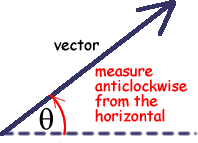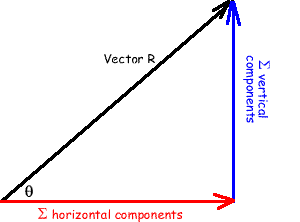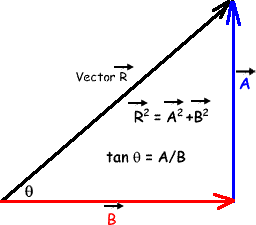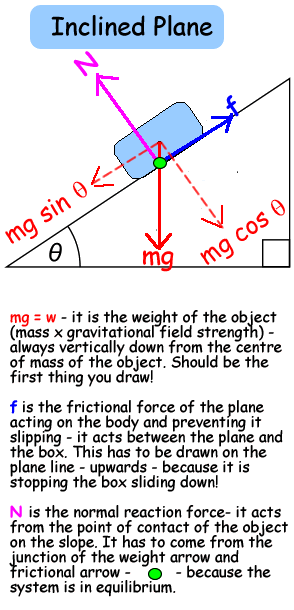    |
|||||||||||||||||||||||||||||||||||||||

Scalars and Vectors |
|||||||||||||||||||||||||||||||||||||||
|
Scalar quantities have only magnitude (size) but vector quantities have magnitude and direction. For example, the weight of an objects acts down towards the Earth's centre but its mass is just a quantity. Forces can push in different directions but energy has no direction associated with it.
You represent vectors with an arrow - the length of the arrow represents the magnitude of the vector and the direction it points on the page represents the direction. You usually put a little arrow over the top of the letter representing a vector in your diagrams.
Addition To add scalars is easy - you just add the values together, but adding vectors is a little more complicated. You have to take the direction into account. At GCSE you will only have to add co-linear vectors (ones that are in a straight line).
Vectors pulling in the opposite direction simply cancel the effect of the each other out. At A Level it is a little more complicated. You have to tackle vectors that point in all directions!.
When drawing out vectors you have to be careful to draw them very carefully.
Always put the scale you are using on the paper - for example write 1 cm The examiners will usually draw a diagram for you and add angles in so that you can do calculations but if the vector is simply written as 20N at 35o, you need to understand what is meant by that....
Vector addition by calculation To add vectors that are pointing in different directions you need to break them down into their horizontal and vertical components. These can then be easily added together to obtain the vertical and horizontal components of the resultant vector. A simple use of Pythagoras Theorem then gives you the magnitude of the vector - and a little bit of 'trig' gets you the angle. It is really simple to do!
Subtracting vectors To subtract a vector simple reverse its direction - then add it! Multiplying vectors by scalars - this affects the magnitude only. Multiplying vectors by vectors (cross and dot products) - this can affect magnitude and/or direction - it is not required at A level in Physics. You can practise resolving vectors into their components by using my interactive XL spreadsheet. Try it out! Simply make up a vector (say, 64N at 23 degrees to the horizontal) and then use your calculator to work out the horizontal and vertical components of it. The spreadsheet will tell you if you have done it correctly. Enter the values into the sheet and it will work out the components for you. This is a useful tool for you to use when you need extra practice. Resolving vectors on an inclined plane
Click here to go to an interactive activity Click on the above link to find out about inclined planes.... then look at the vidclip below for how to solve a problem relating to one.
Here is a link to the page on three coplanar forces in equilibrium. Here is an interactive application |
|||||||||||||||||||||||||||||||||||||||
 |
|||||||||||||||||||||||||||||||||||||||














